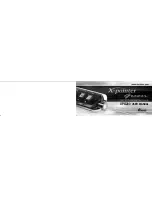
#4 -13511 Crestwood Place, Richmond, BC, V6V 2E9, Canada
+ 1.778.776.3288
discoverbattery.com
3.1 Discharging
No restriction on the discharge current up to the maximum allowable
is required as long as the connections are properly sized and the
battery temperature stays within the allowable limits. The Maximum
Daily Depth of Discharge per cycle (MDDoD) is:
•
Stand-alone: 20%-25% of the batteries C
10
nominal capacity
rating
•
Hybrid systems: 50%-60% of the batteries C
10
nominal capacity
rating
Standard RE warranty is reduced on system designs that exceed
the MDDoD. The Maximum allowable Depth of Discharge (MDoD) is
80% of the batteries temperature compensated C
10
nominal capacity
at any given discharge rate.
Over-Discharge Protection
Maximum Depth of Discharge (MDoD) limits should not be managed
solely based on Ah-counters (counting the ampere- hours into and
out of the battery). Monitoring the battery voltage against the low-
voltage disconnect setting (LVD) should always be included.
•
Stand-Alone Systems (see note below for Array to Load ratios)
•
Hybrid Applications: The MDDoD limit control can be realized
either by Ah-counters, control units and/or by battery voltage
monitoring.
•
The graphs at the end of this document present the battery
voltage to DoD reference as a guide for the initial LVD settings
(first-try after setup settings). The system designer or installer
shall adjust and confirm the LVD settings based on the actual
conditions of the system.
•
For systems where the voltage is measured at the controller
and not on the battery, the voltage drop on the connections to
the battery shall be considered.
•
For mission critical systems with the load directly connected
on the battery, an alarm or other method of user feedback must
be included to provide information about the battery status
when DoD exceeds the design limits.
Array to Load Ratios for Stand-alone Systems
In Stand-alone systems, the renewable source shall be sufficiently
oversized against the application load in order to avoid excessive
cycling beyond design limits which may limit the battery’s life
expectancy. The ampere hour output of the PV array (or other
renewable source) over the load ampere hours for the minimum
design month (month with minimum PV output) should be at least
1.3x times to recharge the battery while the daily load is supplied.
(acc.to IEEE1013)
Low-voltage Re-Connect (LVR) for Stand-alone Systems
The battery voltage at which the load is reconnected after a low
voltage disconnect, should be above 2.2 volts per cell, 6.6 volts per 6
volt block and 13.2 volts per 12 volt block.
3.2 Charging
3.2.1. Balance or Complete Charge
A balance charge is a prolonged charge at an elevated voltage,
performed with the supervisor nearby. It lasts until certain charge
criteria are fulfilled but not outside certain minimum and maximum
time limits. It is mainly used as:
•
Commissioning charge after installation (Sec. 2.8)
•
Corrective equalizing charge (Sec. 3.2.2.2)
•
Preparation charge before a capacity test (Sec. 6)
•
Refresh charge during long storage period (Sec. 1.2, 7)
The battery temperature must be monitored during charge. It
should never exceed 45°C/113°F. If the upper temperature limits
are reached, the charge shall be interrupted or the charge voltage
should be reduced to float voltage for a period of time sufficient
enough to allow the battery to cool down. Operation can continue
once the temperature stabilizes below 45°C/113°F.
CASE 1. Charging using a charger with I-U characteristic
Limit charge current to 1 x I
10
Amps. (10% of the batteries C
10
nominal
capacity).
Voltage Criteria:
•
Individual cell voltages have not risen for a period of 4 hours
Current - Full Charge current behavior:
•
Stability in the last 4 hours: current should not change by more
than ±25%.
Case 2. Charging with I-U-I or I characteristics
Use an I-U-I or I charger that can charge the battery with constant
current at elevated voltages greater than 2.50VPC to 2.80VPC.
•
Bulk charge current limit: 2 x I
10
Amps (20% of the batteries C
10
nominal capacity)
•
Voltage settings for U (absorption) phase: 2.33-2.40VPC
•
Gassing charge current limit: 0.12 x I
10
(1.2 amps per 100AH of
the batteries C
10
nominal capacity)
•
Min.- Max. Charge time at gassing phase: 5h-8h (*)
Voltage Criteria:
•
Voltage stabilizes and has not risen for a period of one hour.
•
Deviation at the end of the charge: cell voltages should not
deviate more than 0.12V from the average.
•
Absolute value: should be above 2.6VPC
(*) In special cases where the maximum charging time has elapsed
but the full charge criteria has not been achieved, the Equalizing
program shall be continued with the following charge and pause
profile:
•
Charge for 2 hours with 0.12 x I
10
(1.2-1.5 amps per 100AH of the
batteries C
10
nominal capacity)
•
Repeat charge and pause profile until the full charge criteria
are fulfilled or a maximum of five charge and pause cycles
have been performed.
Charging with a Solar Charge Controller
Connect the battery to the PV Array via the charge controller and
leave it for 1-2 weeks while the application load is disconnected.
Use the following voltage settings paying close attention to the
ambient temperature near the battery.
Battery Temperature
Volts Per Cell
Min. / Max. Hours
0°C(32°F) - 15°C(60°F)
2.38 – 2.45VPC
48 – 72 h
15°C(60°F) - 30°C(86°F)
2.35 – 2.40VPC
36 – 72 h
30°C(86°F) - 40°C(104°F)
2.32 – 2.35VPC
24 – 48 h
On-Off Controllers
Temperature range
-20°C/0°C
(-4°F/32°F)
0°C/35°C
(32°F/95°F)
>30°C
(>95°F)
High Disconnect Voltage
2.55V
2.45V
2.40V
Low Restart Voltage
2.35V
2.30V
2.25V
Constant Voltage Controllers
Temperature range
-20°C to 0°C
(-4°F to 32°F)
0°C to 35°C
(32°F to 95°F)
>30°C
(>95°F)
Regulation Voltage
2.45V
2.37V
2.33V




























